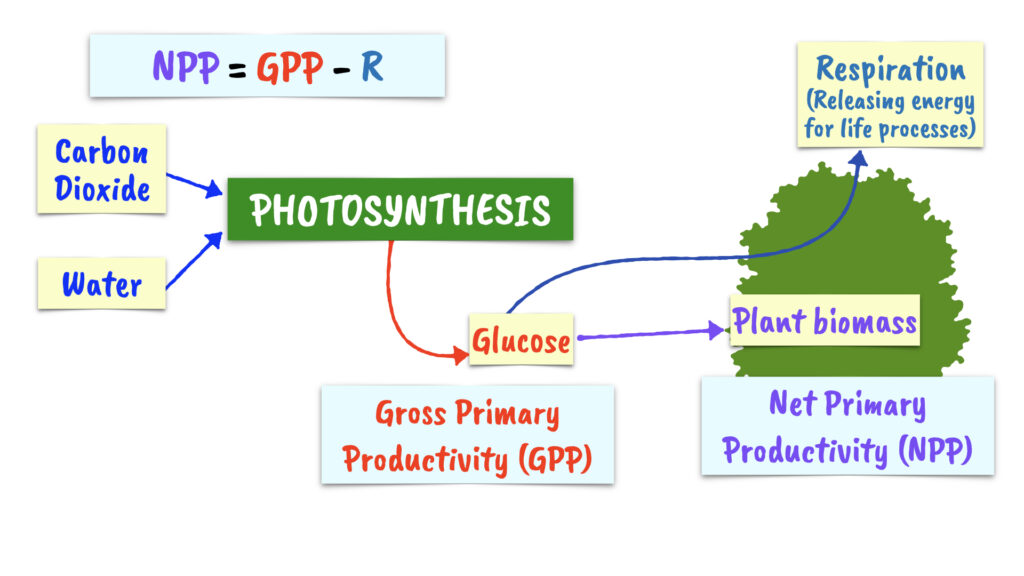The video above, Primary Productivity Explained, give an in-depth look into the concept of ecological productivity. Here’s the summary:
Primary productivity is a key factor in shaping ecosystems. It explains why some regions, like arid deserts, have sparse vegetation, while others, like tropical forests, support dense plant life.
- Gross Primary Productivity (GPP): This is the total energy plants capture from sunlight and convert into glucose during photosynthesis. It represents all the energy available to the plant before any losses.
- Net Primary Productivity (NPP): This is the portion of GPP that remains after accounting for the energy plants use in respiration to support their life processes. NPP is the rate at which energy is converted into plant biomass, fueling ecosystems.
Mathematically, NPP = GPP – Respiration (R).
NPP is usually expressed as energy or biomass per unit area per year, often in units like kilograms of carbon per square meter per year. This allows scientists to compare productivity across ecosystems.

- Ecosystem Examples:
- Tropical forests have high NPP (~1.1 kg of carbon/m²/year), driven by abundant sunlight, rain, and warmth.
- Deserts have low NPP (~0.05 kg of carbon/m²/year), limited by scarce rainfall despite plenty of sunlight.
In aquatic ecosystems, phytoplankton, tiny photosynthetic organisms, dominate primary production.
NPP provides the energy foundation for all consumers in food webs, underscoring its role in determining an ecosystem’s capacity to support life.
